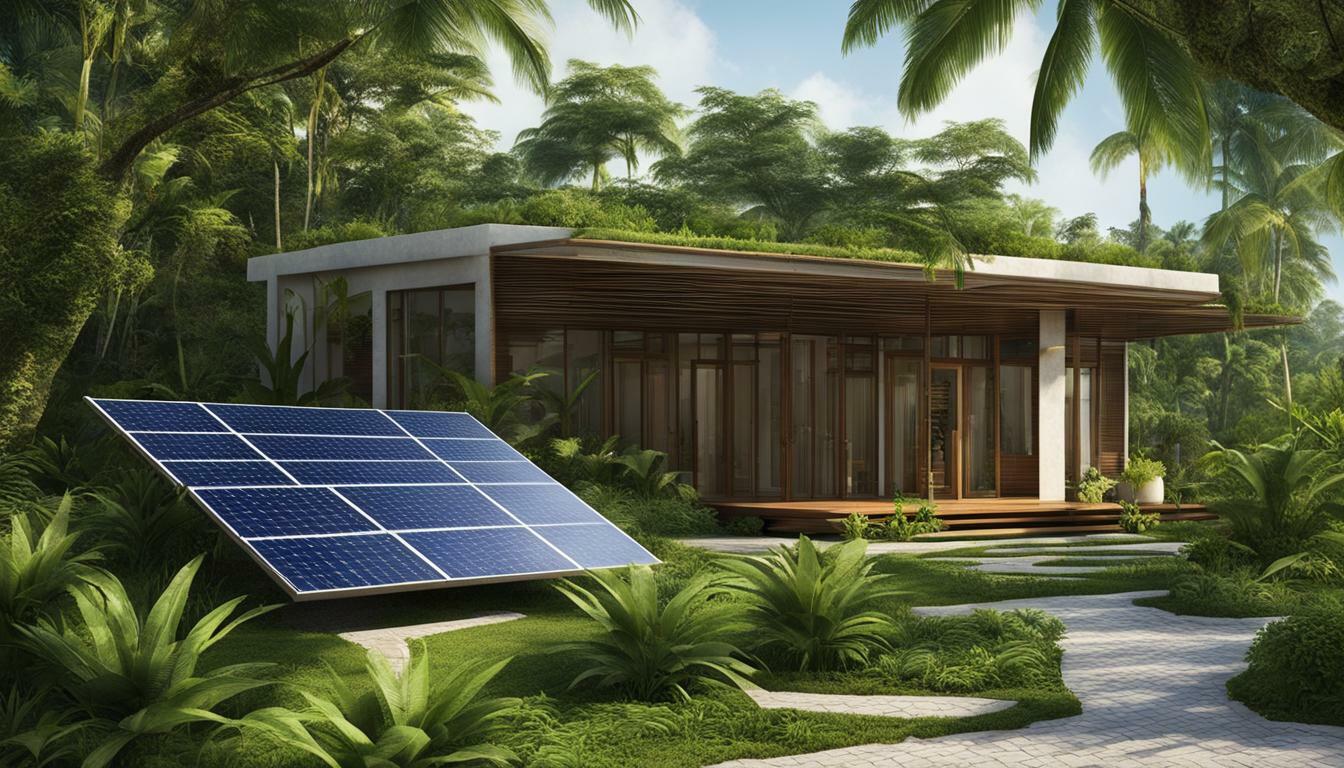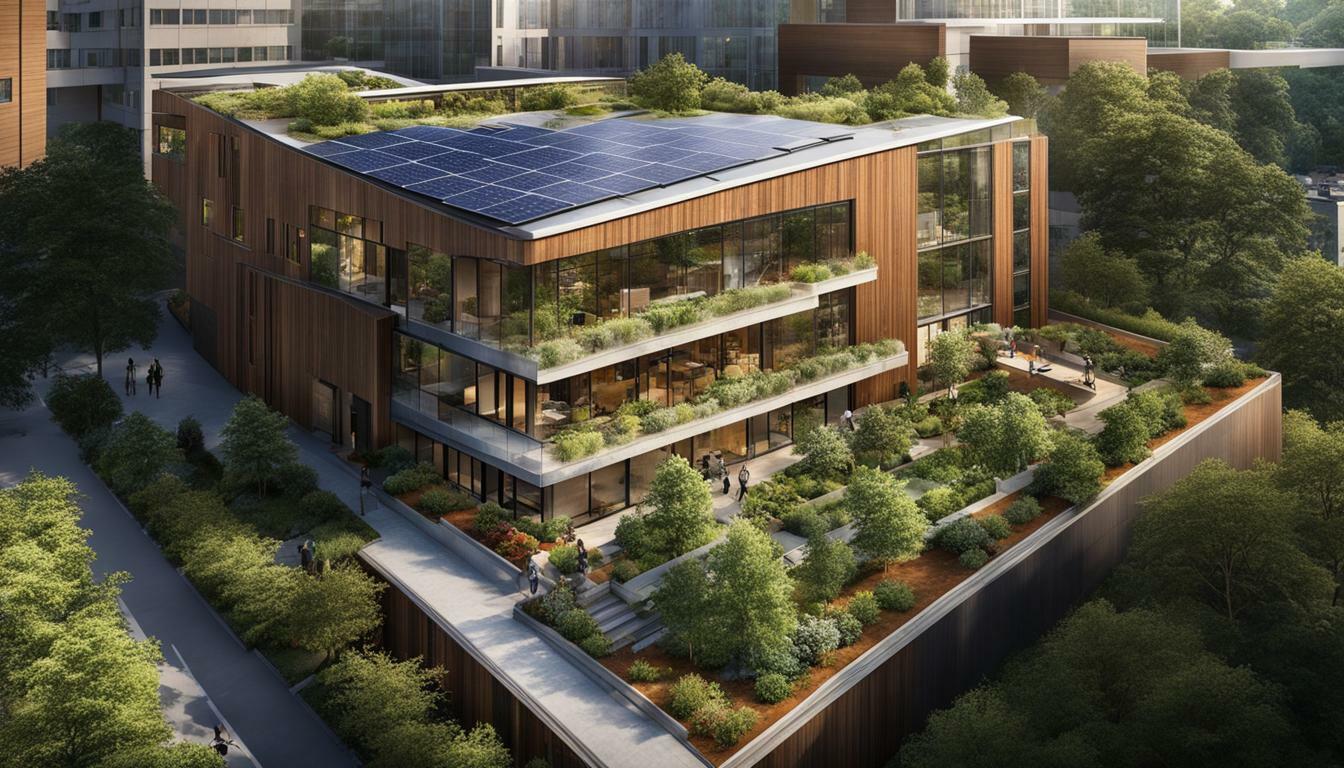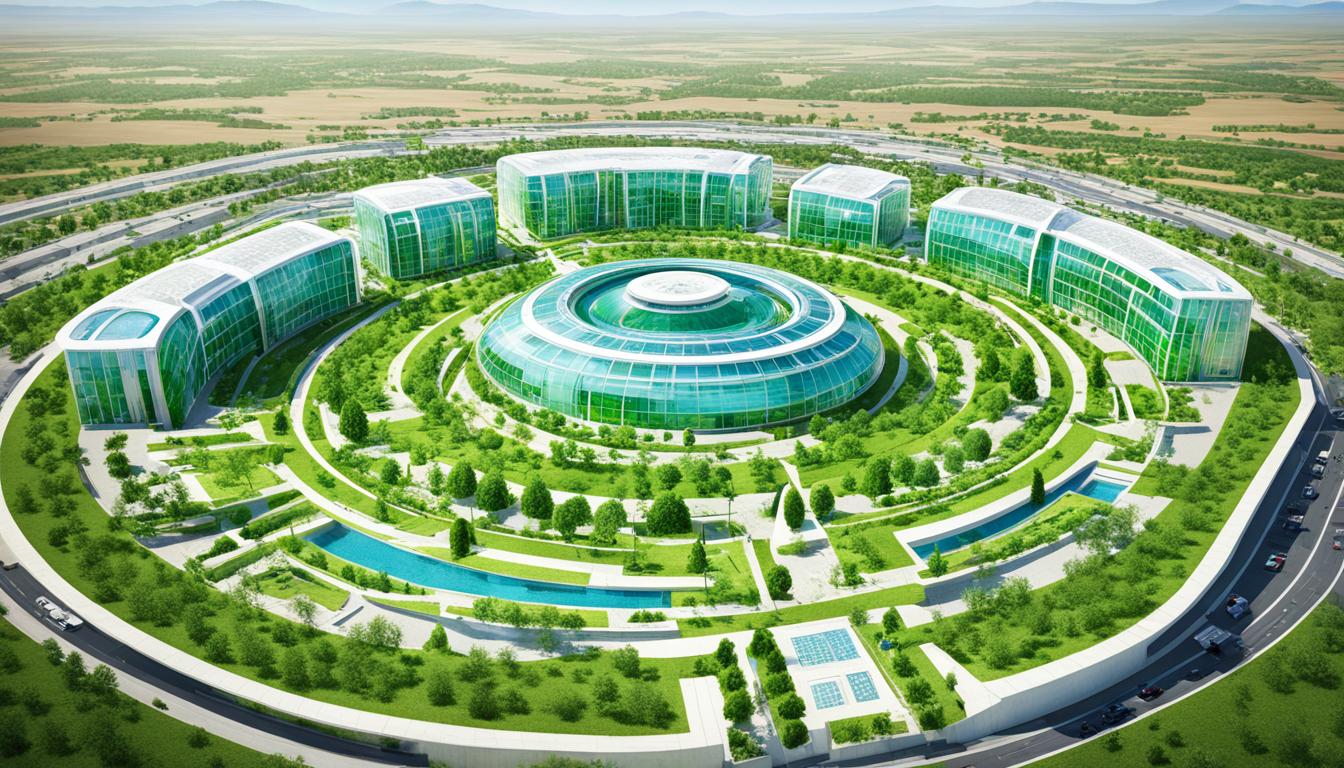Ethiopia Green Building History
Ethiopia Green Building History reveals the transformative journey towards sustainable and eco-friendly architectures in the country. The construction industry has had a substantial negative impact on the environment, contributing to greenhouse gas emissions, energy consumption, waste generation, and resource depletion. To mitigate these effects, green building practices and technologies have been advocated as a way forward.
However, in Ethiopia, the adoption of green building concepts and technologies has been limited. Most buildings in Addis Ababa do not incorporate green building practices, relying instead on conventional building materials and designs. Only a few buildings in Ethiopia have received green building certifications. This lack of adoption is due, in part, to the absence of a green building assessment tool specifically designed for the Ethiopian context.
Key Takeaways:
- Ethiopia faces challenges in adopting green building practices and technologies.
- Most buildings in Addis Ababa do not incorporate eco-friendly techniques.
- A new assessment tool called Ethio-SBAT has been developed to enhance green building adoption.
- Ethio-SBAT considers the triple bottom line sustainability of buildings.
- The tool includes categories such as materials and resources, energy efficiency, and water efficiency.
By understanding the history and current state of green building in Ethiopia, we can work towards a more sustainable future for the country’s construction industry. Adopting eco-friendly building techniques and embracing green building practices will not only reduce our negative impact on the environment but also contribute to the overall well-being of the communities we serve.
Green Building Practices in Ethiopia
Green Building Practices in Ethiopia showcase the ongoing efforts to promote sustainable architecture and environmentally-conscious construction methods. In response to the negative environmental impacts of the construction industry, there has been a growing movement towards adopting green building practices in Ethiopia. These practices aim to minimize energy consumption, reduce waste generation, and utilize eco-friendly materials.
Despite the challenges faced, the Ethiopian green building movement has gained momentum, with several projects implementing sustainable architecture principles. One notable example is the Ethiopian Skylight Hotel, which has achieved LEED (Leadership in Energy and Environmental Design) certification, demonstrating its commitment to eco-friendly design and construction. This hotel stands as a flagship project, inspiring other developers and architects to embrace green building practices.
“Green building practices in Ethiopia are essential for the country’s sustainable development. By incorporating sustainable architecture and environmentally-conscious construction methods, we can minimize our environmental impact and create healthier and more resilient buildings.” – Ethiopian Green Building Council
However, the widespread adoption of green building practices in Ethiopia faces challenges. Limited awareness and understanding of sustainable construction techniques, high upfront costs, and a lack of available resources and expertise are some of the barriers hindering progress. To address these challenges, there is a need for increased education and training programs, government incentives, and partnerships between different stakeholders in the construction industry.
Table: Benefits of Green Building Practices in Ethiopia
| Environmental Benefits | Economic Benefits | Social Benefits |
|---|---|---|
|
|
|

Embracing green building practices in Ethiopia is crucial for achieving sustainable development in the construction industry. It requires a collective effort from all stakeholders, including architects, engineers, developers, policymakers, and the general public. By prioritizing sustainable architecture and environmentally-conscious construction methods, Ethiopia can pave the way for a greener and more resilient future for its built environment.
Challenges and Solutions for Green Building in Ethiopia
Overcoming challenges and solutions for green building in Ethiopia presents an analysis of the obstacles and opportunities in integrating environmentally-conscious construction methods into the Ethiopian construction industry. The construction industry in Ethiopia has traditionally relied on conventional building materials and practices, resulting in a substantial negative impact on the environment. However, there is a growing recognition of the need for sustainable development and eco-friendly building techniques.
One of the main challenges in adopting green building practices in Ethiopia is the lack of awareness and understanding of the benefits of sustainable construction methods. Many developers and contractors are not familiar with environmentally-conscious techniques and may perceive them as costly or impractical. This highlights the need for education and awareness programs to promote the advantages of green building, such as energy efficiency, reduced environmental footprint, and improved indoor air quality.
Another significant hurdle is the limited availability of green building materials and technologies in Ethiopia. Sustainable materials, such as locally sourced timber or recycled materials, may not be widely accessible or affordable. This issue calls for increased investment in research and development to create more sustainable alternatives and promote the local production of eco-friendly building materials.
To address these challenges, several green building initiatives have been launched in Ethiopia. These initiatives aim to raise awareness, provide training and capacity building, and facilitate the exchange of knowledge and best practices. Additionally, the introduction of Ethio-SBAT, a specialized assessment tool for green building, has the potential to drive sustainable development in the Ethiopian construction industry. This tool offers a comprehensive framework for evaluating buildings based on their environmental, social, and economic performance, ensuring that sustainable building design becomes a priority in the country.
| Challenges | Solutions |
|---|---|
| Lack of awareness and understanding of green building benefits | Implement education and awareness programs |
| Limited availability of green building materials and technologies | Invest in research and develop sustainable alternatives |
| Low capacity and knowledge of sustainable construction practices | Provide training and capacity building initiatives |
By addressing these challenges and embracing green building practices, Ethiopia has the opportunity to significantly reduce its environmental impact and promote sustainable development in the construction industry. With the support of initiatives, awareness programs, and the Ethio-SBAT assessment tool, Ethiopia can pave the way towards a more environmentally-conscious future.
Key Takeaways:
- The adoption of green building practices in Ethiopia is limited, with most buildings relying on conventional materials and designs.
- A lack of awareness, limited availability of green materials, and low capacity are key challenges in the Ethiopian construction industry.
- Education programs, research and development, and the Ethio-SBAT assessment tool are solutions to promote sustainable construction practices.

Ethio-SBAT: A New Assessment Tool for Green Building in Ethiopia showcases the innovative approach taken to assess and enhance sustainable development in the Ethiopian construction industry. With the aim of promoting green building practices and driving sustainable building design, this tool addresses the challenges faced by the Ethiopian construction industry in embracing environmentally-conscious construction methods and sustainable development.
Developed specifically for the Ethiopian context, Ethio-SBAT focuses on the triple bottom line sustainability of buildings. By considering categories such as materials and resources, sustainable sites and ecology, energy efficiency, indoor environmental quality, economic aspects, management, water efficiency, and location and transportation, this assessment tool provides a comprehensive framework for evaluating the sustainability of buildings in Ethiopia.

Through its detailed criteria, Ethio-SBAT encourages the adoption of sustainable construction practices and the use of eco-friendly building techniques. By measuring and scoring various aspects of a building’s sustainability, it encourages architects, designers, and developers to prioritize sustainable solutions in their projects. This tool not only helps in quantifying the environmental impact of buildings but also takes into account the economic and social aspects, ensuring a holistic evaluation of sustainability.
The implementation of Ethio-SBAT in the Ethiopian construction industry is set to bring about positive change, driving the adoption of green building practices and fostering sustainable development. By providing a standardized framework for assessment and guidance, this tool empowers stakeholders to make informed decisions that contribute to a more sustainable future for Ethiopia’s built environment.
Table 1: Ethio-SBAT Categories and Criteria
| Category | Criteria |
|---|---|
| Materials and Resources | Sustainable sourcing, recycling, and reuse |
| Sustainable Sites and Ecology | Site selection, biodiversity, and ecosystem preservation |
| Energy Efficiency | Building envelope, HVAC systems, and renewable energy |
| Indoor Environmental Quality | Air quality, thermal comfort, and acoustics |
| Economic Aspects | Life cycle costs, return on investment, and market value |
| Management | Sustainable building operation and maintenance |
| Water Efficiency | Water conservation, wastewater management, and rainwater harvesting |
| Location and Transportation | Access to public transportation, walkability, and reduced emissions |
Conclusion
In conclusion, Ethiopia Green Building History highlights the significance of adopting sustainable construction practices, eco-friendly building techniques, and green building initiatives to drive sustainable architecture and development in Ethiopia.
The construction industry in Ethiopia has a substantial negative impact on the environment, contributing to greenhouse gas emissions, energy consumption, waste generation, and resource depletion. However, the adoption of green building concepts and technologies in the country has been limited. Most buildings in Addis Ababa and other parts of Ethiopia still rely on conventional building materials and designs, neglecting the potential benefits of sustainable construction.
Only a few buildings in Ethiopia have received green building certifications, reflecting the lack of awareness and the absence of incentives to prioritize sustainability in construction projects. To address this issue, a new assessment tool called Ethio-SBAT has been developed, specifically tailored to the Ethiopian context. Ethio-SBAT considers the triple bottom line sustainability of buildings, encompassing categories such as materials and resources, sustainable sites and ecology, energy efficiency, indoor environmental quality, economic aspects, management, water efficiency, and location and transportation.
The development of Ethio-SBAT aims to enhance the adoption of green building concepts and technologies in Ethiopian buildings by providing a standardized framework for assessment. This tool will allow builders and architects to evaluate their projects’ environmental impact and make informed decisions to improve sustainability. By embracing green building practices, Ethiopia can reduce its carbon footprint, conserve natural resources, and create healthier and more efficient buildings for its growing population.
FAQ
What is the history of green building in Ethiopia?
The history of green building in Ethiopia involves the adoption of sustainable construction practices and eco-friendly building techniques to mitigate the negative environmental impacts of the construction industry.
What are the current green building practices in Ethiopia?
Currently, most buildings in Ethiopia do not incorporate green building practices, relying instead on conventional building materials and designs. However, there is a growing Ethiopian green building movement that aims to promote sustainable architecture in the country.
What are the challenges and solutions for green building in Ethiopia?
The Ethiopian construction industry faces challenges in adopting green building practices. However, there are initiatives and potential solutions, such as promoting environmentally-conscious construction methods and sustainable development, that can drive the adoption of green building practices.
What is Ethio-SBAT and how does it promote green building in Ethiopia?
Ethio-SBAT is a new assessment tool specifically designed for the Ethiopian context. It focuses on the triple bottom line sustainability of buildings and includes categories and criteria such as materials and resources, energy efficiency, and indoor environmental quality. Ethio-SBAT has the potential to drive sustainable building design and development in Ethiopia.
Why is embracing green building practices important for Ethiopia?
Embracing green building practices is important for Ethiopia to achieve a more sustainable future. It helps reduce greenhouse gas emissions, energy consumption, waste generation, and resource depletion in the construction industry. Green building practices also contribute to creating healthier indoor environments and promoting economic sustainability.








